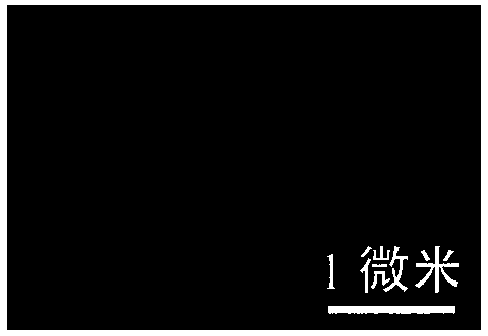Method for preparation of hydroxyapatite nanorod and nanowire by hydrothermal process
A hydroxyapatite and hydrothermal technology, applied in chemical instruments and methods, nanotechnology, nanotechnology, etc., can solve problems such as environmental pollution, increase process complexity and production cost, and achieve environmentally friendly and excellent protein adsorption. and release performance, shape controllable effect
- Summary
- Abstract
- Description
- Claims
- Application Information
AI Technical Summary
Problems solved by technology
Method used
Image
Examples
Embodiment 1
[0033] Add 10 mL of 0.1 M calcium chloride aqueous solution dropwise to 20 mL of 15.5 mg / mL riboflavin sodium phosphate aqueous solution at a rate of 10 mL / min, adjust the pH of the mixture to 9 with 1 M sodium hydroxide, and stir for 5 minutes. The mixed solution was placed in a hydrothermal reaction kettle, the hydrothermal heating temperature was 180°C, and the reaction was carried out for 24 hours. After the reaction, the precipitate was collected by centrifugation, washed with water, and dried in air at 60°C to obtain hydroxyapatite nanorods.
[0034] The samples were characterized by SEM and TEM, such as figure 1 and 2 shown. It can be seen from the figure that the shape of the prepared sample is a nanorod, the length of the nanorod is about 50 nm to 200 nm, and the width is about 20 nm to 50 nm. The obtained hydroxyapatite nanorods have the characteristics of good dispersion, uniform size and the like.
Embodiment 2
[0036] Add 10 mL of 0.1 M calcium chloride aqueous solution dropwise to 20 mL of 15.5 mg / mL riboflavin sodium phosphate aqueous solution at a rate of 15 mL / min, adjust the pH value of the mixture to 5 with dilute hydrochloric acid, stir for 5 minutes, and The mixed solution was placed in a hydrothermal reaction kettle, the hydrothermal heating temperature was 180°C, and the reaction was carried out for 24 hours. After the reaction, the precipitate was collected by centrifugation, washed with water, and dried in air at 60°C to obtain hydroxyapatite nanowires.
[0037] The samples were characterized by SEM and TEM, such as image 3 and 4 shown. It can be seen from the figure that the shape of the prepared sample is nanowire, and the length of the nanowire is several micrometers to tens of micrometers.
Embodiment 3
[0039] The hydroxyapatite nanorods and nanowires obtained in Example 1 and Example 2 were added to an aqueous solution containing bovine hemoglobin, and after shaking for 24 hours at 37°C, the product was centrifuged, washed, and dried to obtain the adsorbed protein hydroxyapatite nanorods / nanowires. The protein-adsorbed hydroxyapatite nanorods / nanowires have good sustained-release performance and pH-controlled release behavior in phosphate buffers with different pH values. Such as Figure 5 As shown, in phosphate buffer at pH 4.5, the release of HA nanorods and nanowires adsorbed bovine hemoglobin reached equilibrium in 12 hours, and the release amounts were 7% and 12%, respectively; however, in phosphate buffer at pH 7.4 The hydroxyapatite nanorods and nanowires adsorbed bovine hemoglobin in the buffer solution reached equilibrium after slow release for 142 hours, and the equilibrium release amounts were 44% and 36%, respectively. This is because bovine hemoglobin is a neu...
PUM
 Login to View More
Login to View More Abstract
Description
Claims
Application Information
 Login to View More
Login to View More - R&D
- Intellectual Property
- Life Sciences
- Materials
- Tech Scout
- Unparalleled Data Quality
- Higher Quality Content
- 60% Fewer Hallucinations
Browse by: Latest US Patents, China's latest patents, Technical Efficacy Thesaurus, Application Domain, Technology Topic, Popular Technical Reports.
© 2025 PatSnap. All rights reserved.Legal|Privacy policy|Modern Slavery Act Transparency Statement|Sitemap|About US| Contact US: help@patsnap.com



